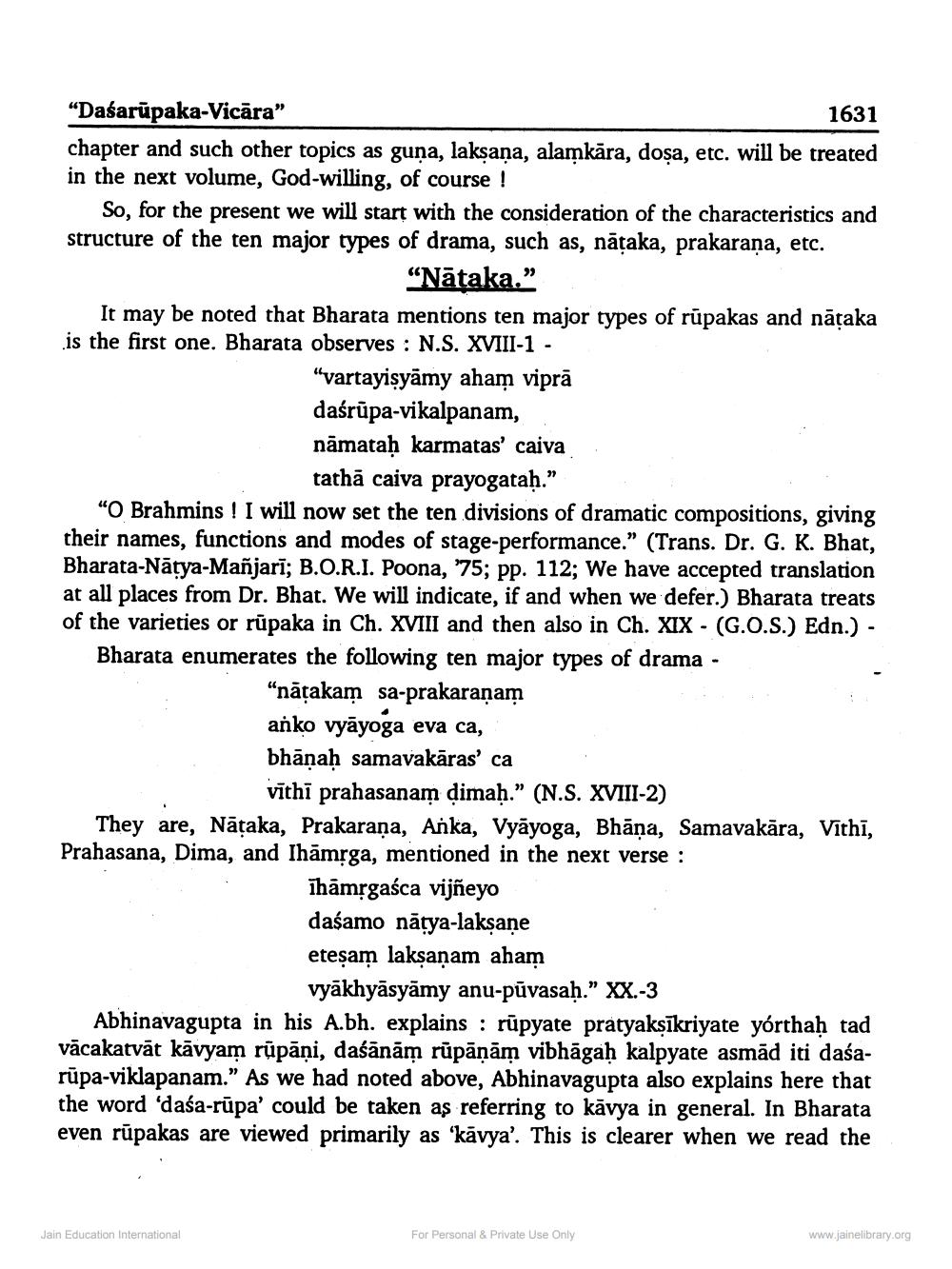________________
“Dasarūpaka-Vicāra"
1631 chapter and such other topics as guna, laksana, alamkāra, dosa, etc. will be treated in the next volume, God-willing, of course!
So, for the present we will start with the consideration of the characteristics and structure of the ten major types of drama, such as, nātaka, prakarana, etc.
“Nātaka.” It may be noted that Bharata mentions ten major types of rūpakas and nāšaka is the first one. Bharata observes : N.S. XVIII-1 -
"vartayisyāmy aham viprā daśrūpa-vikalpanam, nāmataḥ karmatas' caiva
tathā caiva prayogataḥ.” "O Brahmins ! I will now set the ten divisions of dramatic compositions, giving their names, functions and modes of stage-performance.” (Trans. Dr. G. K. Bhat, Bharata-Nătya-Mañjarī; B.O.R.I. Poona, '75; pp. 112; We have accepted translation at all places from Dr. Bhat. We will indicate, if and when we defer.) Bharata treats of the varieties or rūpaka in Ch. XVIII and then also in Ch. XIX - (G.O.S.) Edn.) - Bharata enumerates the following ten major types of drama -
“nāțakam sa-prakaranam anko vyāyoga eva ca, bhāṇaḥ samavakāras' ca
vīthī prahasanam dima).” (N.S. XVIII-2) They are, Nataka, Prakarana, Anka, Vyāyoga, Bhāņa, Samavakāra, Vithī, Prahasana, Dima, and Ihāmiga, mentioned in the next verse :
īhāmrgaśca vijñeyo daśamo nāțya-lakşane eteșam lakṣaṇam aham
vyākhyāsyāmy anu-pūvasaḥ.” XX.-3 Abhinavagupta in his A.bh. explains : rūpyate prátyaksīkriyate yórthaḥ tad vācakatvāt kāvyam rūpāņi, daśānām rūpāņām vibhāgah kalpyate asmād iti daśarūpa-viklapanam.” As we had noted above, Abhinavagupta also explains here that the word 'daśa-rūpa' could be taken as referring to kavya in general. In Bharata even rūpakas are viewed primarily as 'kavya'. This is clearer when we read the
Jain Education International
For Personal & Private Use Only
www.jainelibrary.org




